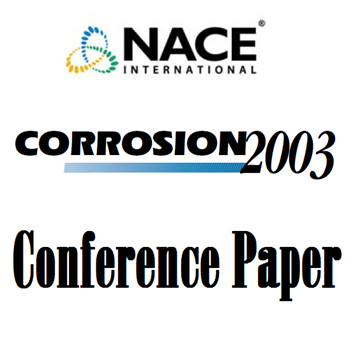Search
10295 Role of Drawing-Induced Residual Stresses and Strains on Hydrogen Embrittlement of Cold Drawn Wires
Also Purchased
03534 EVALUATION OF HYDROGEN EMBRITTLEMENT OF S13CR STAINLESS STEELS BASED ON SSR AND CTOD TESTING
Product Number:
51300-03534-SG
ISBN:
03534 2003 CP
Publication Date:
2003
$20.00
04563Controlling Hydrogen Embrittlement in Ultra-High Strength Steels
Product Number:
51300-04563-SG
ISBN:
04563 2004 CP
$20.00
05098 A Review on Hydrogen Embrittlement of Duplex Stainless Steels
Product Number:
51300-05098-SG
ISBN:
05098 2005 CP
$20.00




